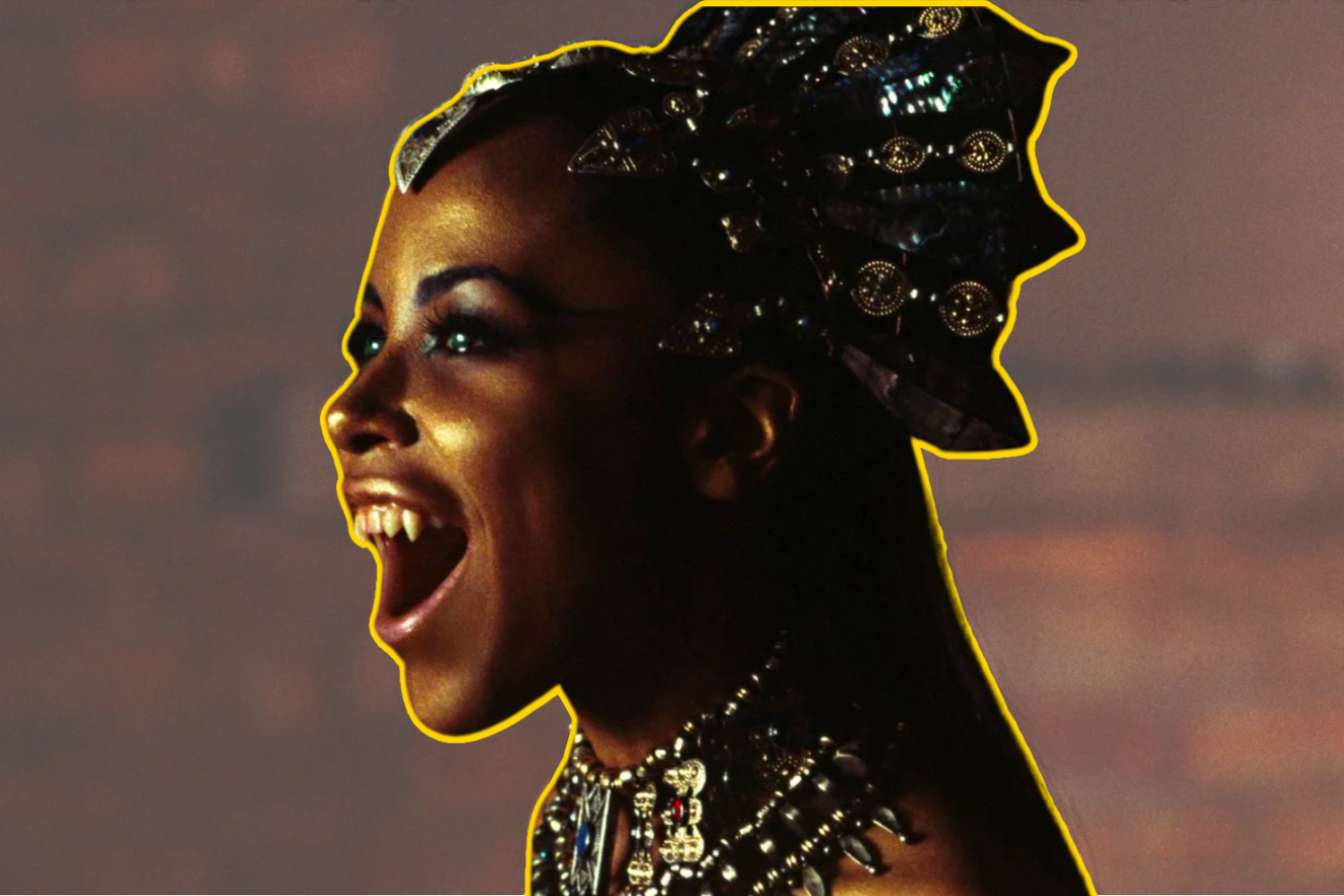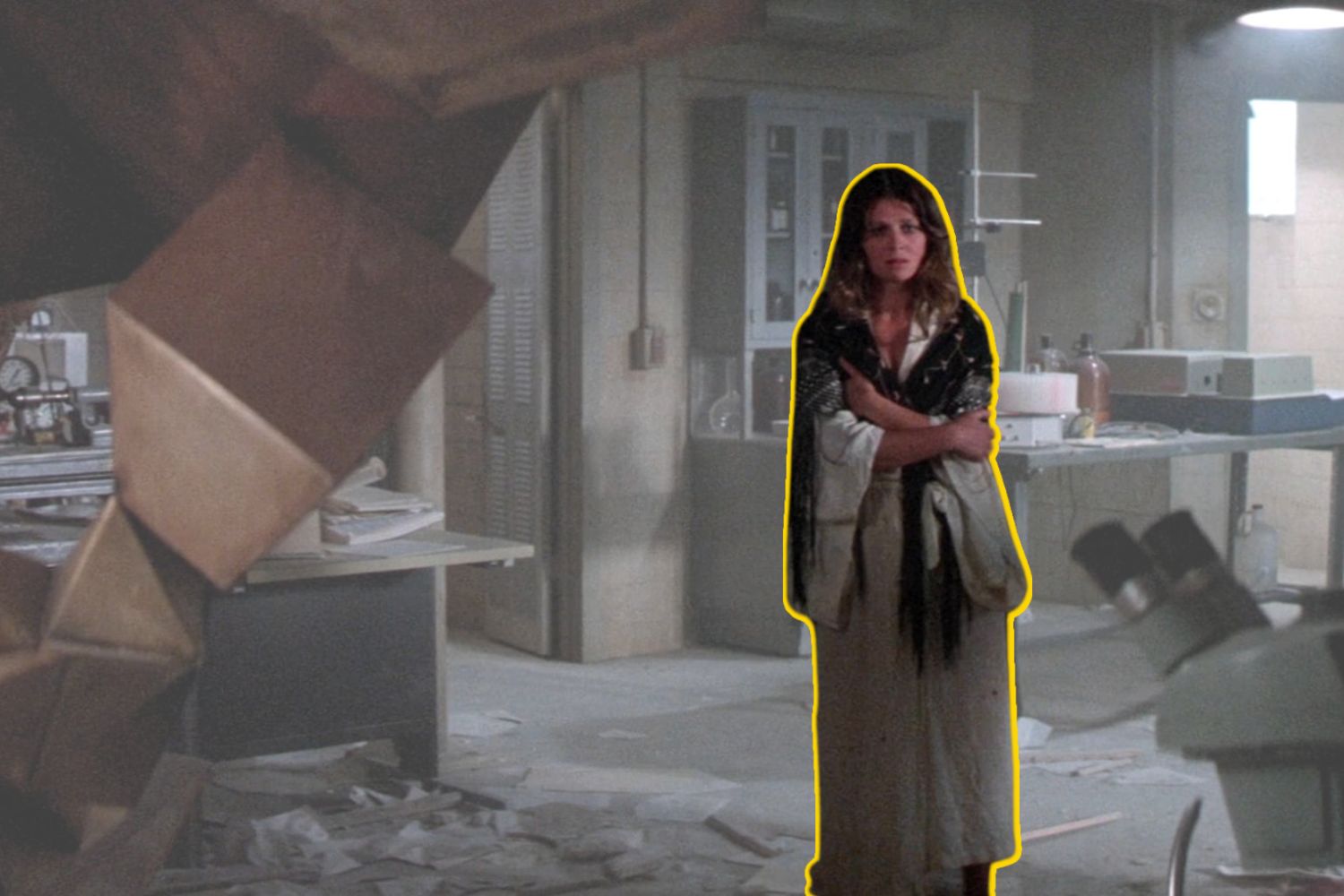Editorials
Jesus, Dracula, and Bob: The Fascinating Birth of ‘Dracula 2000’
January 10th, 2022 | By Kayleigh Donaldson

A few years ago, director Scott Derrickson shared a brief anecdote on Twitter regarding the time he worked with producer Bob Weinstein on rewriting a script. “It’s terrible,” Weinstein reportedly told Derrickson. “But I’m making it anyway.” When asked why, Weinstein said, “Because it’s called Dracula 2000.” It’s the kind of movie mogul story that seems like a parody, an Onion joke come to life, but it happened. And this reasoning explains a lot about the movie with a name so tantalizing the Weinsteins just had to make it.
The Dimension Factory
Dimension Films was founded in 1992 as a genre-focused alternative to its parent company, Miramax. Where that now-infamous brand was the playground of Harvey Weinstein and his awards-baity projects, Dimension was the focus of his brother Bob. Dimension’s aim was to make solid and consistent profits from “low-end” science fiction and horror movies that would in turn help to fund more prestigious efforts.
While they didn’t exclusively release horror movies, Dimension became known for its assembly line approach to that most dismissed of genres. They acquired the rights to beloved franchises like Hellraiser and Halloween and rushed out straight-to-video and tightly-budgeted sequels. With the former series, Dimension became notorious for hastily rewriting pre-existing scripts to shoehorn in Hellraiser-related plot points rather than create stories from scratch.
For every Scream or EXistenZ, there’s a sixth Children of the Corn movie or a vaguely remembered direct-to-video title. As noted by Alisa Perren in Indie Inc., few Dimension productions ever cost more than $20 million—a drop in the ocean compared to the lavish costs of a Miramax Oscar player like The English Patient. It’s not hard to see why Bob Weinstein would want to apply this ruthlessly efficient business model—unconcerned with cultural heft—to a horror icon with convenient public domain status.
The Birth of Y2Dracula
Dracula 2000, directed by Patrick Lussier, is but one of dozens of re-imaginings of Bram Stoker’s novel that ultimately has very little to do with its source material. This then-modern take sees Dracula in America as he tries to track down and seduce the daughter of his nemesis, Dr. Van Helsing, for potentially nefarious but mostly sexy purposes. As cinema’s most adapted literary character, the Count has evolved into a cultural vessel for myriad metaphors and ideas. Vampirism is a fascinatingly malleable literary archetype that can be molded into a stand-in for whatever issue takes your fancy: sex, death, infection, race, gender, politics, and more.
It would have been easy for Dracula 2000 to be yet another hot vampire movie all about the allure of the sexy immortal being, and it certainly isn’t short of that thanks to the lead casting of a dashing unknown named Gerard Butler. It’s a film with one foot firmly in the world of Anne Rice, right down to the shared New Orleans setting. The cast is populated exclusively with conventionally hot young folks like Jonny Lee Miller and Jennifer Esposito—and Christopher Plummer phoning it in—while Count Dracula’s seductions are devoid of the traumatic implications overlooked by most adaptations but present in the novel.
In one scene—taking place appropriately enough in the Virgin Megastore—Dracula marvels at a screen showing a sultry BDSM-inspired music video, a sign of this new era’s sexual liberation that is primed for his invasion. There’s nothing to fear or be repulsed by with this sensual vampire; this is a noteworthy departure from Stoker’s novel, where the attack of Dracula and his brides is shown as a brutal act not unlike that of rape. The vampire as a stand-in for rocking, consensual sex had been something of a default mode in the ‘90s in large part thanks to Interview with the Vampire and Bram Stoker’s Dracula, two films that revel in the sensual opulence that the creature conveys.
What makes the film unique—and surprisingly ambitious given its auspicious origins—is the vampiric metaphor that it eventually settles on. Dracula 2000 is that rare adaptation that focuses primarily on themes of religion and Christianity’s adversarial relationship with the undead. After you watch Dracula 2000, you suddenly realize how much of vampire lore we take for granted. We know that vampires fear the cross and are allergic to silver, but few stories—including Stoker’s original novel—actually give explanations for this. Dracula 2000, however, offers an unexpected backstory that opens up many historical and cultural what-ifs.
The Fall of Judas
Here, Dracula is Judas Iscariot, cursed to wander the earth as an immortal following his betrayal of Jesus and attempted suicide. His phobia of silver comes from the thirty pieces he accepted from the Romans and eventually it is death by hanging that finally releases him from his fate. To tie the origin of vampirism so thoroughly to the New Testament and divorce it of any Transylvanian roots isn’t unheard of—the cult novel This is My Blood by David Niall Wilson reimagines Mary Magdalene as a vampire—but it is understandably nervy, especially for a schlocky movie full of Linkin Park songs.
It’s an origin story that suggests a dense millennia-long re-evaluation of socio-political norms, some fascinating and others intensely problematic. Judas as the father of all vampires inadvertently strengthens a lot of deep-seated anti-Semitism tied to the supposed “blood libel” smear that has plagued Jewish people for centuries. One wonders if the choice to cast the role with a very white Scot was a way to avoid this problem—or if it’s an implication that nobody thought about for more than five seconds.
It’s hardly a surprise that Dracula 2000 seems ill-equipped to deal with the ambition it creates for itself. Watching the film, one can practically hear Bob Weinstein telling Derrickson to dumb everything down. Still, it’s in those glimpses of provocation that the film becomes something far more interesting than Dimension ever wanted it to be. This is one of the few Dracula films to include the crossing of the Demeter—here reimagined as a transatlantic flight turned bloody massacre. The depiction of Van Helsing as a semi-immortal being guiltily addicted to Dracula’s blood offers a welcome shade of grey to a frequently two-dimensional character in this lore. There’s even real pathos in the climax when, in his dying moments, Dracula Iscariot finally feels the warmth of God’s light.
Conclusion
Dracula 2000 was a commercial flop—featuring only a worldwide box office gross of $47.1 million against a $54 million budget—but it was still the sixth-highest-grossing film for the Weinsteins that year. In keeping with Dimension’s model, it inspired two direct-to-video sequels of decreasing quality (also directed by Lussier) that still manage to retain several intriguingly unique aspects of vampire mythology. The first sequel, Dracula II: Ascension, is the only film in the genre that features the unusual note from European folklore that vampires are compulsive counters who can be distracted by a sprinkling of mustard seeds.
Neither of these films are especially good, although peeks of something grander than DTV-mandated laziness can be seen. As expected, the name mattered more than anything else. “Hollywood is built on franchises,” Bob Weinstein himself noted. “[Miramax] couldn’t have a Piano 2 or My Right Foot. With Dimension, the opportunity to have a franchise is there.”
It worked. Dimension consistently made more money than Miramax/The Weinstein Company. Harvey may have been the now-disgraced kingmaker, but Bob was the one who brought in the cash. Even that came to an end by the 2010s, as Dimension’s output petered to irregular releases and little fanfare before the company became embroiled in Harvey Weinstein’s fall from grace. Those pocket-lining franchises like Halloween and Hellraiser are now owned by other studios, with fans generally agreeing that they’re in far safer creative hands as a result. Dracula didn’t come along but he never needed to. Such is the joy of the public domain.
Dracula 2000 may mostly be remembered by horror fans as a fun title with little else to back it up, but it remains a curious byproduct of an era of filmmaking that, for better or worse, defined Hollywood’s attitudes towards the genre for many years. Take the names, strip-mine them for parts and franchise it until the well runs dry. Fortunately, vampires are a sturdy bunch, creatures who are flexible enough to withstand even the weakest of adaptations. Nobody will ever truly own Dracula, but the stories he inspires always reveal more about their makers than they ever could have anticipated.
Visit our Editorials page for more articles like this. Ready to support more original horror criticism? Join the Certified Forgotten Patreon community today.



